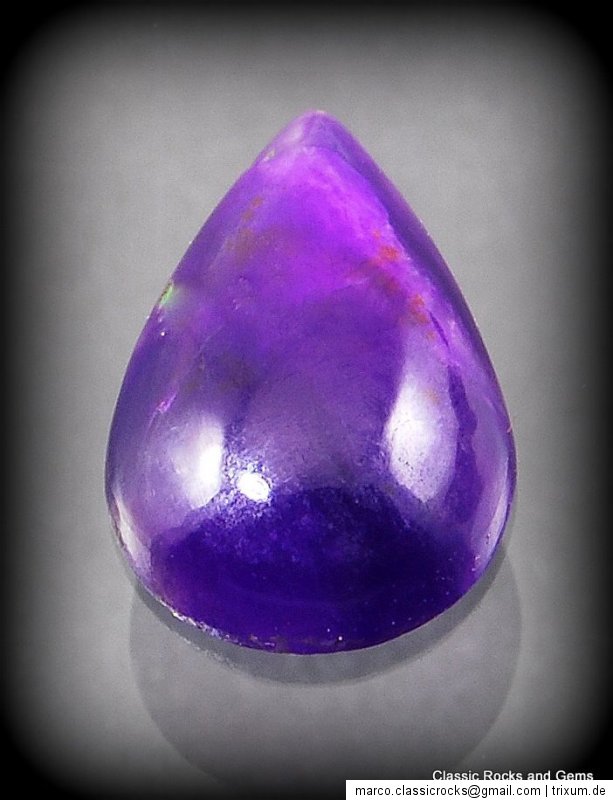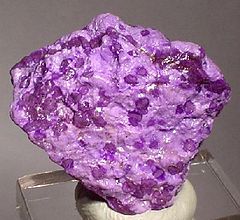

| Sugilite | |
|---|---|
 Sugilite from Wessels Mine in Northern Cape Province, South Africa | |
| General | |
| Category | Cyclosilicate |
| Formula (repeating unit) | KNa2(Fe,Mn,Al)2Li3Si12O30 |
| Strunz classification | 09.CM.05 |
| Dana classification | 63.02.01a.09 |
| Crystal symmetry | Hexagonal |
| Identification | |
| Formula mass | 1,041.66 |
| Color | Light brownish-yellow, purple, violet, reddish violet, pale pink, colourless |
| Crystal habit | Granular |
| Mohs scalehardness | 6–6½ |
| Luster | Vitreous |
| Streak | White |
| Diaphaneity | Transparent to translucent |
| Specific gravity | 2.74 |
| References | [1][2] |
Sugilite (also known as lavulite) is a relatively rare pink to purple cyclosilicate mineral with the complex chemical formula KNa2(Fe,Mn,Al)2Li3Si12O30. Sugilite crystallizes in the hexagonal system with prismatic crystals. The crystals are rarely found and the form is usually massive. It has a Mohs hardness of 5.5 to 6.5 and a specific gravity of 2.75 to 2.80. It is mostly translucent.
Sugilite was first described in 1944 by the Japanese petrologist Ken-ichi Sugi (1901–1948) for an occurrence on Iwagi Islet, Japan, where it is found in an aegirine syenite intrusive stock. It is found in a similar environment atMont Saint-Hilaire, Quebec, Canada. In the Wessels mine in northern Cape Province of South Africa, sugilite is mined from a strata-bound manganese deposit. It is also reported from Liguria and Tuscany, Italy; New South Wales, Australia; and Madhya Pradesh, India.
Note: The mineral is commonly pronounced with a soft "g", as in "ginger". However, as with most minerals, its pronunciation is intended to be the same as the person it is named after; in this case, the Japanese name Sugi has a hard "g", as in "geese": /ˈsuːɡɨlaɪt/ soo-gi-lyt.
Contents[hide] |
[edit]Gallery
[edit]See also
[edit]References
[edit]External links
| Wikimedia Commons has media related to: Sugilite |
| ||||||||||||||||||||||||||||


